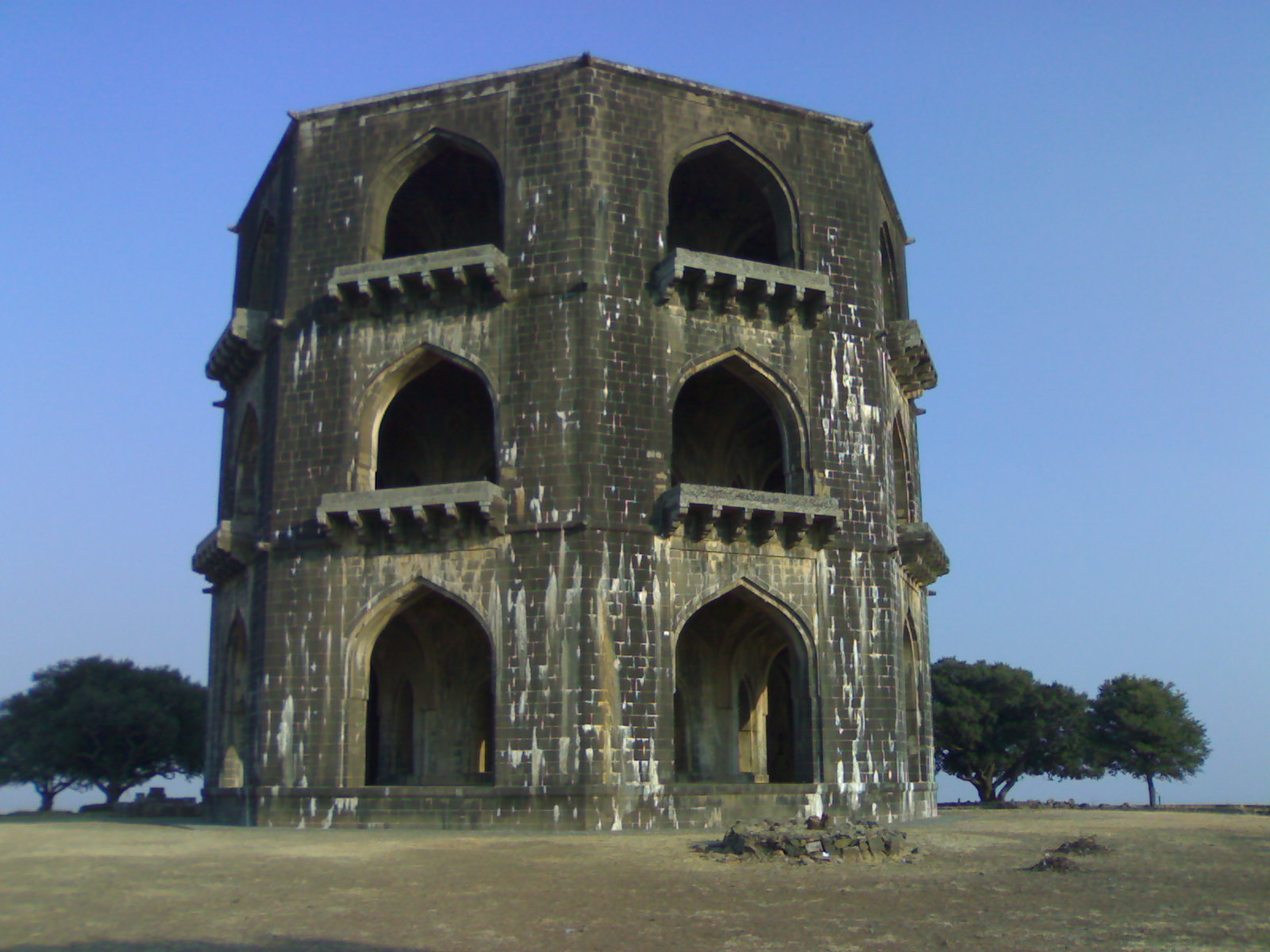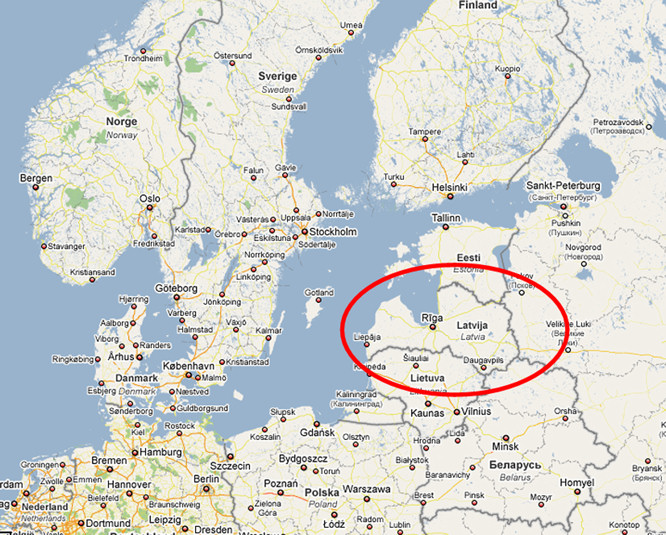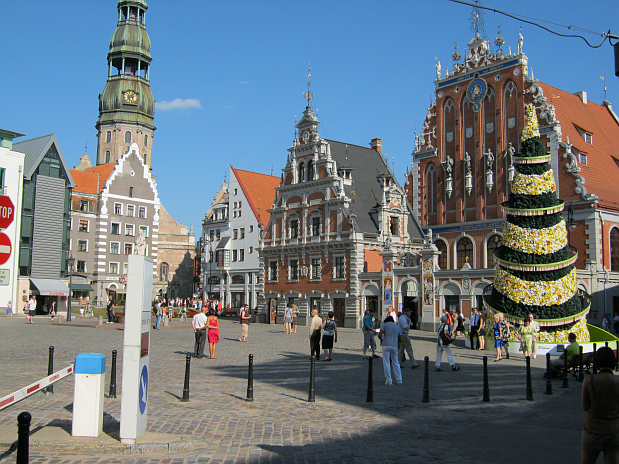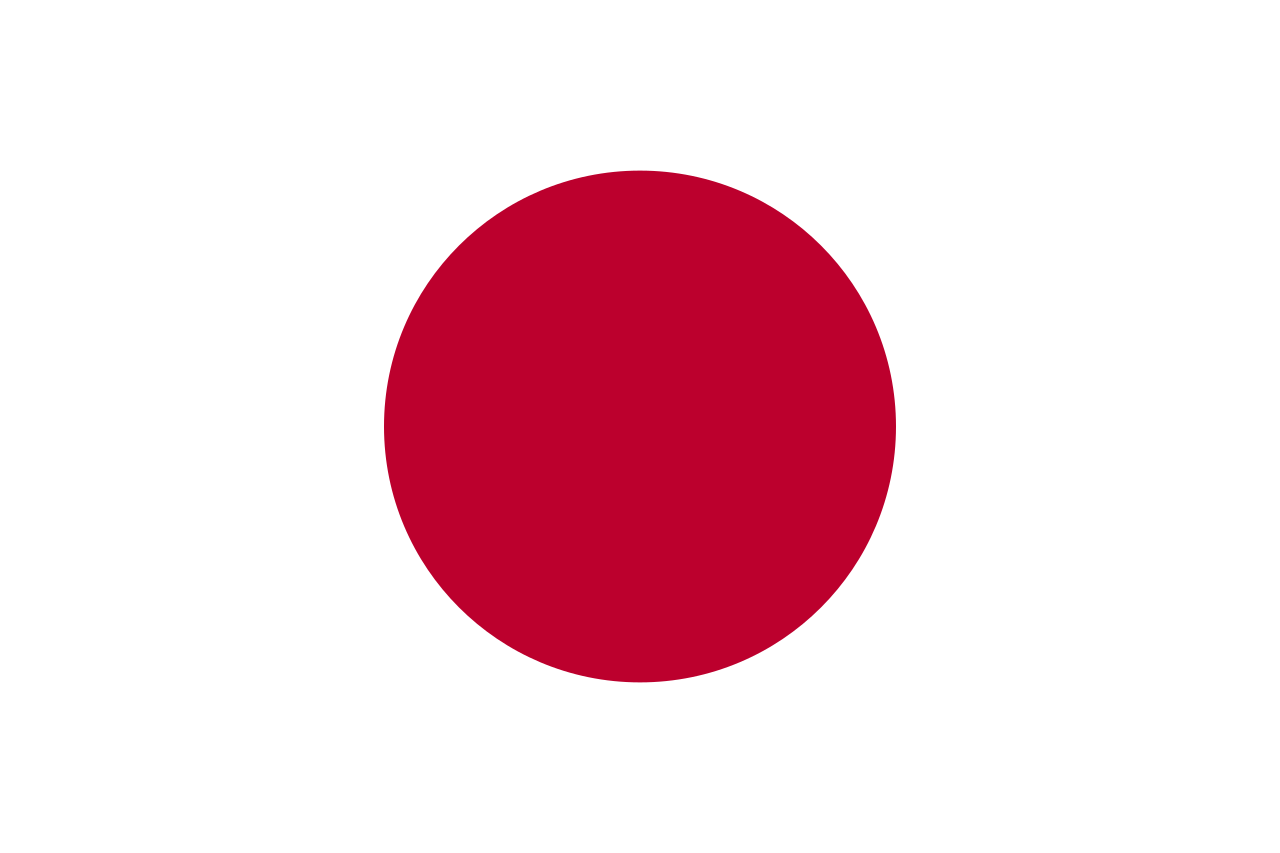Laboratory-scale spray dryer.
A=Solution or suspension to be dried in, B=Atomization gas in, 1= Drying gas in, 2=Heating of drying gas, 3=Spraying of solution or suspension, 4=Drying chamber, 5=Part between drying chamber and cyclone, 6=Cyclone, 7=Drying gas is taken away, 8=Collection vessel of product, arrows mean that this is co-current lab-spraydryer
Spray drying is a method of producing a dry powder from a liquid or slurry by rapidly drying with a hot gas. This is the preferred method of drying of many thermally-sensitive materials such as foods and pharmaceuticals. A consistent particle size distribution is a reason for spray drying some industrial products such as catalysts. Air is the heated drying medium; however, if the liquid is a flammable solvent such as ethanol or the product is oxygen-sensitive then nitrogen is used.[1]

All spray dryers use some type of atomizer or spray nozzle to disperse the liquid or slurry into a controlled drop size spray. The most common of these are rotary disks and single-fluid high pressure swirl nozzles. Atomizer wheels are known to provide broader particle size distribution, but both methods allow for consistent distribution of particle size.[2] Alternatively, for some applications two-fluid or ultrasonic nozzles are used. Depending on the process needs, drop sizes from 10 to 500 µm can be achieved with the appropriate choices. The most common applications are in the 100 to 200 µm diameter range. The dry powder is often free-flowing.[3]
The most common spray dryers are called single effect as there is only one drying air on the top of the drying chamber (see n°4 on the scheme). In most cases the air is blown in co-current of the sprayed liquid. The powders obtained with such type of dryers are fine with a lot of dusts and a poor flowability. In order to reduce the dusts and increase the flowability of the powders, there is since over 20 years a new generation of spray dryers called multiple effect spray dryers. Instead of drying the liquid in one stage, the drying is done through two steps: one at the top (as per single effect) and one for an integrated static bed at the bottom of the chamber. The integration of this fluidized bed allows, by fluidizing the powder inside a humid atmosphere, to agglomerate the fine particles and to obtain granules having commonly a medium particle size within a range of 100 to 300 µm. Because of this large particle size, these powders are free-flowing.
The fine powders generated by the first stage drying can be recycled in continuous flow either at the top of the chamber (around the sprayed liquid) or at the bottom inside the integrated fluidized bed. The drying of the powder can be finalized on an external vibrating fluidized bed.
The hot drying gas can be passed as a co-current or counter-current flow to the atomiser direction. The co-current flow enables the particles to have a lower residence time within the system and the particle separator (typically a cyclone device) operates more efficiently. The counter-current flow method enables a greater residence time of the particles in the chamber and usually is paired with a fluidized bed system.
Alternatives to spray dryers are:[4]
- Freeze dryer: a more-expensive batch process for products that degrade in spray drying. Dry product is not free-flowing.
- Drum dryer: a less-expensive continuous process for low-value products; creates flakes instead of free-flowing powder.
- Pulse combustion dryer: A less-expensive continuous process that can handle higher viscosities and solids loading than a spray dryer, and that sometimes gives a freeze-dry quality powder that is free-flowing.
Spray dryer
A spray dryer takes a liquid stream and separates the solute or suspension as a solid and the solvent into a vapor. The solid is usually collected in a drum or cyclone. The liquid input stream is sprayed through a nozzle into a hot vapor stream and vaporised. Solids form as moisture quickly leaves the droplets. A nozzle is usually used to make the droplets as small as possible, maximising heat transfer and the rate of water vaporisation. Droplet sizes can range from 20 to 180 μm depending on the nozzle.[3] There are two main types of nozzles: high pressure single fluid nozzle (50 to 300 bars) and two-fluid nozzles: one fluid is the liquid to dry and the second is compressed gas (generally air at 1 to 7 bars).
Spray dryers can dry a product very quickly compared to other methods of drying. They also turn a solution, or slurry into a dried powder in a single step, which can be advantageous for profit maximization and process simplification.
The Spray Drying Process
The spray drying process is older than might commonly be imagined. Earliest descriptions date from 1860 with the first patented design recorded in 1872. The basic idea of spray drying is the production of highly dispersed powders from a fluid feed by evaporating the solvent. This is achieved by mixing a heated gas with an atomized (sprayed) fluid of high surface-to-mass ratio droplets, ideally of equal size, within a vessel (drying chamber), causing the solvent to evaporate uniformly and quickly through direct contact.
Spray drying can be used in a wide range of applications where the production of a free-flowing powder is required. This method of dehydration has become the most successful one in the following areas:
- Pharmaceuticals
- Bone and tooth amalgams
- Beverages
- Flavours, colourings and plant extracts
- Milk and egg products
- Plastics, polymers and resins
- Soaps and detergents
- Textiles and many more
Almost all other methods of drying, including use of ovens, freeze dryers or rotary evaporators, produce a mass of material requiring further processing (e.g. grinding and filtering) therefore, producing particles of irregular size and shape. Spray drying on the other hand, offers a very flexible control over powder particle properties such as density, size, flow characteristics and moisture content.
Design and Control
The challenges facing both designers and users are to increase production, improve powder quality and reduce costs. This requires an understanding of the process and a robust control implementation.
Spray drying consists of the following phases:
- Feed preparation: This can be a homogenous, pumpable and free from impurities solution, suspension or paste.
- Atomization (transforming the feed into droplets): Most critical step in the process. The degree of atomization controls the drying rate and therefore the dryer size. The most commonly used atomization techniques are:
1. Pressure nozzle atomization: Spray created by forcing the fluid through an orifice. This is an energy efficient method which also offers the narrowest particle size distribution.
2. Two-fluid nozzle atomization: Spray created by mixing the feed with a compressed gas. Least energy efficient method. Useful for making extremely fine particles.
3. Centrifugal atomization: Spray created by passing the feed through or across a rotating disk. Most resistant to wear and can generally be run for longer periods of time.
- Drying: A constant rate phase ensures moisture evaporates rapidly from the surface of the particle. This is followed by a falling rate period where the drying is controlled by diffusion of water to the surface of the particle.
- Separation of powder from moist gas: To be carried out in an economical (e.g. recycling the drying medium) and pollutant-free manner. Fine particles are generally removed with cyclones, bag filters, precipitators or scrubbers.
- Cooling and packaging.
A control system must therefore provide flexibility in the way in which accurate and repeatable control of the spray drying is achieved and will include the following features:
- Precise loop control with setpoint profile programming
- Recipe Management System for easy parameterisation
- Sequential control for complex control strategies
- Secure collection of on-line data from the system for analysis and evidence
- Local operator display with clear graphics and controlled access to parameters
Micro-encapsulation
Spray drying often is used as an encapsulation technique by the food and other industries. A substance to be encapsulated (the load) and an amphipathic carrier (usually some sort of modified starch) are homogenized as a suspension in water (the slurry). The slurry is then fed into a spray drier, usually a tower heated to temperatures well over the boiling point of water.
As the slurry enters the tower, it is atomized. Partly because of the high surface tension of water and partly because of thehydrophobic/hydrophilic interactions between the amphipathic carrier, the water, and the load, the atomized slurry forms micelles. The small size of the drops (averaging 100 micrometers in diameter) results in a relatively large surface area which dries quickly. As the water dries, the carrier forms a hardened shell around the load.[5]
Load loss is usually a function of molecular weight. That is, lighter molecules tend to boil off in larger quantities at the processing temperatures. Loss is minimized industrially by spraying into taller towers. A larger volume of air has a lower average humidity as the process proceeds. By the osmosis principle, water will be encouraged by its difference in fugacities in the vapor and liquid phases to leave the micelles and enter the air. Therefore, the same percentage of water can be dried out of the particles at lower temperatures if larger towers are used. Alternatively, the slurry can be sprayed into a partial vacuum. Since the boiling point of a solvent is the temperature at which the vapor pressure of the solvent is equal to the ambient pressure, reducing pressure in the tower has the effect of lowering the boiling point of the solvent.
The application of the spray drying encapsulation technique is to prepare “dehydrated” powders of substances which do not have any water to dehydrate. For example, instant drink mixes are spray dries of the various chemicals which make up the beverage. The technique was once used to remove water from food products; for instance, in the preparation of dehydrated milk. Because the milk was not being encapsulated and because spray drying causes thermal degradation, milk dehydration and similar processes have been replaced by other dehydration techniques. Skim milk powders are still widely produced using spray drying technology around the world, typically at high solids concentration for maximum drying efficiency. Thermal degradation of products can be overcome by using lower operating temperatures and larger chamber sizes for increased residence times.[6]
Recent research is now suggesting that the use of spray-drying techniques may be an alternative method for crystallization of amorphous powders during the drying process since the temperature effects on the amorphous powders may be significant depending on drying residence times.[7][8]
Spray drying applications
Food: milk powder, coffee, tea, eggs, cereal, spices, flavorings, starch and starch derivatives, vitamins, enzymes, stevia, colourings, etc.
Pharmaceutical: antibiotics, medical ingredients, additives
Industrial: paint pigments, ceramic materials, catalyst supports, microalgae
Nano spray dryer
The nano spray dryer offers new possibilities in the field of spray drying. It allows to produce particles in the range of 300 nm to 5 μm with a narrow size distribution. High yields are produced up to 90% and the minimal sample amount is 1 mL.
Pharmaceutical Spray drying is a very fast method of drying due to the very large surface area created by the atomization of the liquid feed. As a consequence, high heat transfer coefficients are generated and the fast stabilisation of the feed at moderate temperatures makes this method very attractive for heat sensitive materials.
Spray drying provides unprecedented particle control and allows previously unattainable delivery methods and molecular characteristics. These advantages allow exploration into employing previously unattainable delivery methods and molecular characteristics.

Five things you might not know about spray drying
- Spray drying is suitable for heat sensitive materials
Spray drying is already used for the processing of heat sensitive materials (e.g. proteins, peptides and polymers with low Tg temperatures) on an industrial scale. Evaporation from the spray droplets starts immediately after contact with the hot process gas. Since the thermal energy is consumed by evaporation, the droplet temperature is kept at a level where no harm is caused to the product. - Spray drying turns liquid into particles within seconds
The large surface of the droplets provides near instantaneous evaporation, making it possible to produce particles with a crystalline or amorphous structure. The particle morphology is determined by the operating parameters and excipients added to the feed stock. - Spray drying is relatively easy to replicate on a commercial scale
GEA Niro has been producing industrial scale spray drying plants for well over half a century. Our process know-how, products and exceptional facilities put us in a unique position to advise and demonstrate how products and processes will behave on a large scale. - Spray drying is a robust process
Spray drying is a continuous process. Once the set points are established, all critical process parameters are kept constant throughout the batch. Information for the batch record can be monitored or logged, depending on the system selected. - Spray drying can be effectively validated
The precise control of all critical process parameters in spray drying provides a high degree of assurance that the process consistently produces a product that meets set specifi cations.
The spray drying process
Spray drying is a very fast method of drying due to the very large surface area created by the atomization of the liquid feed and high heat transfer coefficients generated. The short drying time, and consequently fast stabilisation of feed material at moderate temperatures, means spray drying is also suitable for heat-sensitive materials.
As a technique, spray drying consists of four basic stages:
- Atomization: A liquid feed stock is atomized into droplets by means of a nozzle or rotary atomizer. Nozzles use pressure or compressed gas to atomize the feed while rotary atomizers employ an atomizer wheel rotating at high speed.
- Drying: Hot process gas (air or nitrogen) is brought into contact with the atomized feed guided by a gas disperser, and evaporation begins. The balance between temperature, flow rate and droplet size controls the drying process.
- Particle formation: As the liquid rapidly evaporates from the droplet surface, a solid particle forms and falls to the bottom of the drying chamber.
- Recovery: The powder is recovered from the exhaust gas using a cyclone or a bag filter. The whole process generally takes no more than a few seconds.
References
- A. S. Mujumdar (2007). Handbook of industrial drying. CRC Press. p. 710. ISBN 1-57444-668-1.
- http://www.elantechnology.com/spray-drying/
- Walter R. Niessen (2002). Combustion and incineration processes. CRC Press. p. 588. ISBN 0-8247-0629-3.
- Onwulata p.66
- Ajay Kumar (2009). Bioseparation Engineering. I. K. International. p. 179. ISBN 93-8002-608-0.
- Onwulata pp.389–430
- Onwulata p.268
- Chiou, D.; Langrish, T. A. G. (2007). “Crystallization of Amorphous Components in Spray-Dried Powders”. Drying Technology 25: 1427. doi:10.1080/07373930701536718.
Bibliography
- Charles Onwulata (2005). Encapsulated and powdered foods. CRC Press. p. 268. ISBN 0-8247-5327-5.
Further reading
- Keey, R.B., (1992). Drying of Loose and Particulate Materials 1st ed., Taylor & Francis, ISBN 0-89116-878-8
- Nutritional evaluation of food processing second edition (1975), Robert S. Harris, Ph.D. and Endel Karmas Ph.D. (eds)
- Cook, E.M, and DuMont, H.D. (1991) Process Drying Practice, McGraw-Hill, Inc., ISBN 0-07-012462-0
External links
-
Ahmednagar – Wikipedia, the free encyclopedia
en.wikipedia.org/wiki/AhmednagarAhmednagar is a medieval city. Numerous Mughal-era buildings dot the environs
.Ahmednagar Fort, once considered the second most impregnable fort in India, …


























 Edmunds Lukevics
Edmunds Lukevics

















